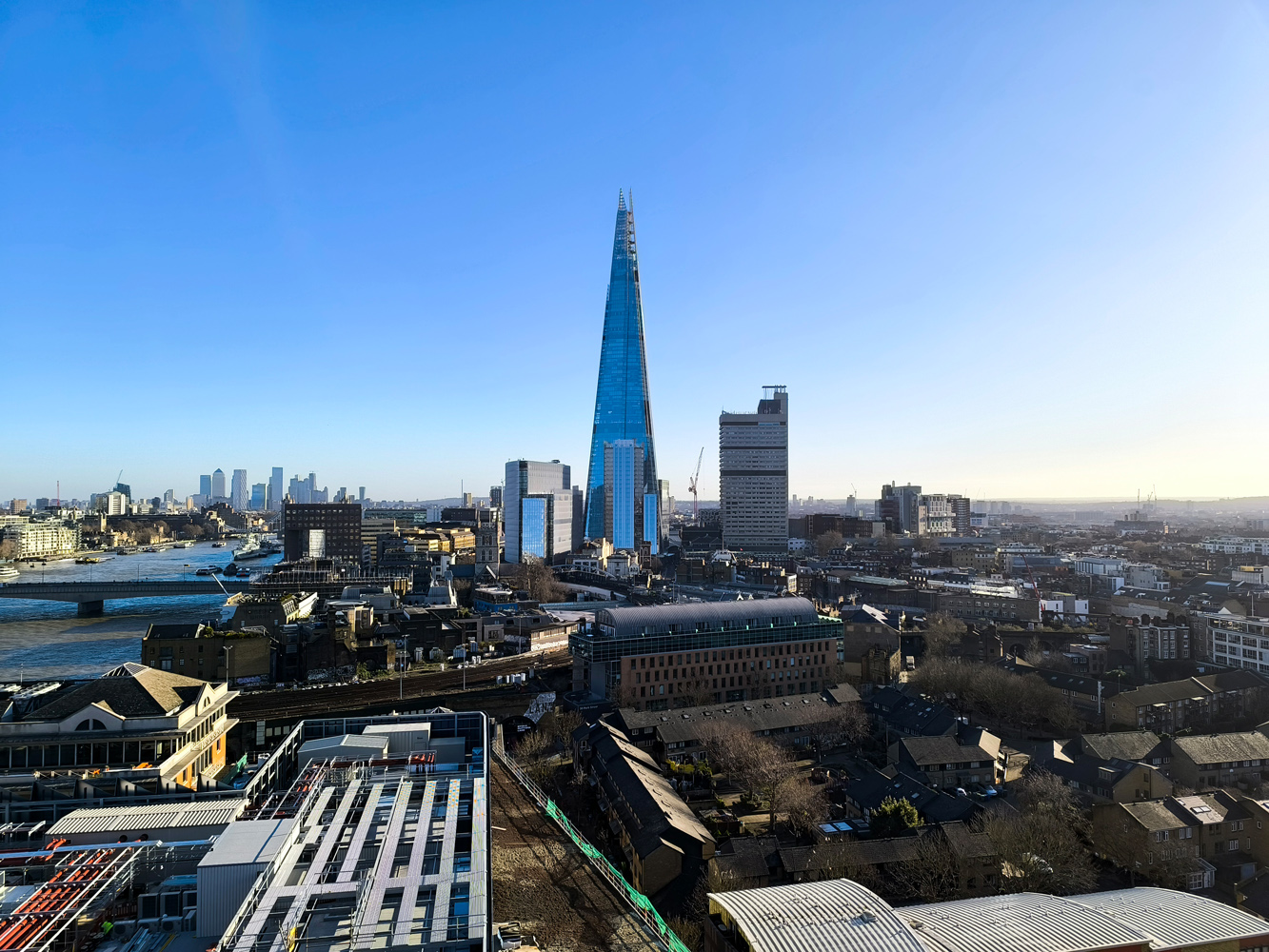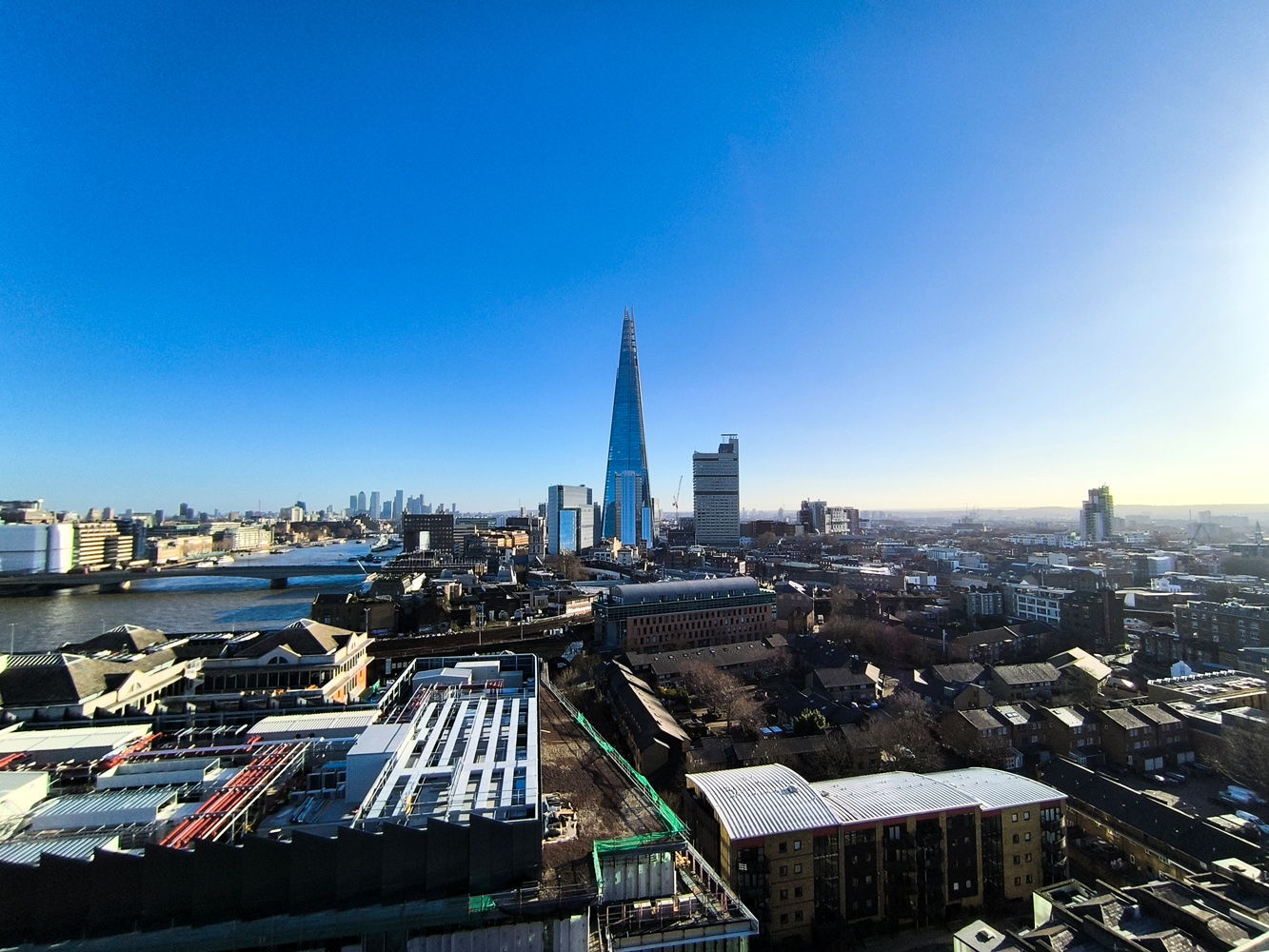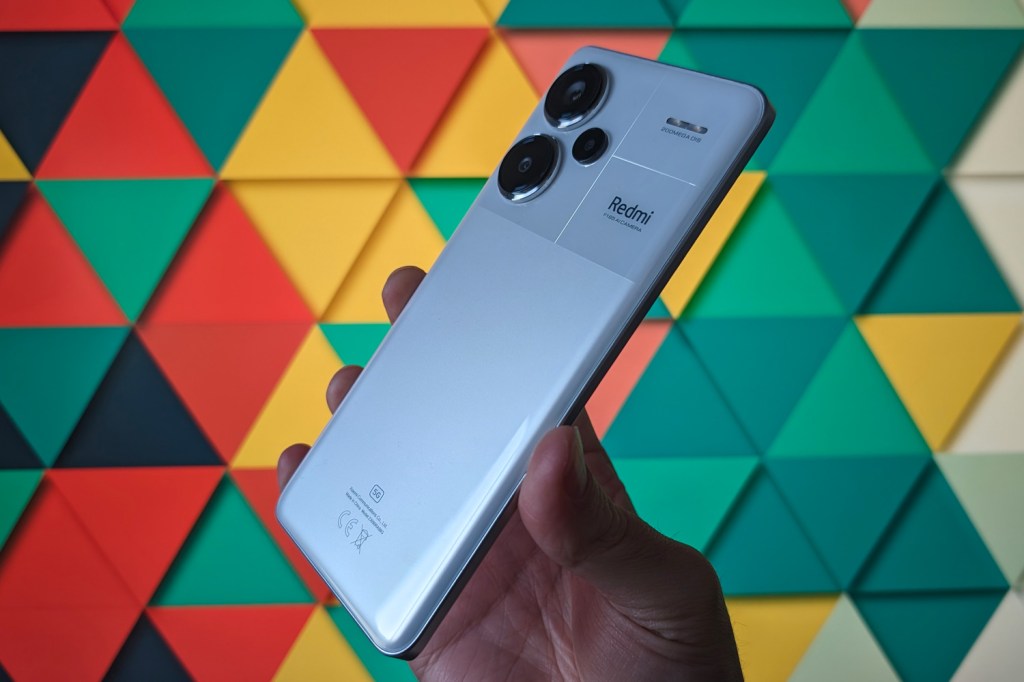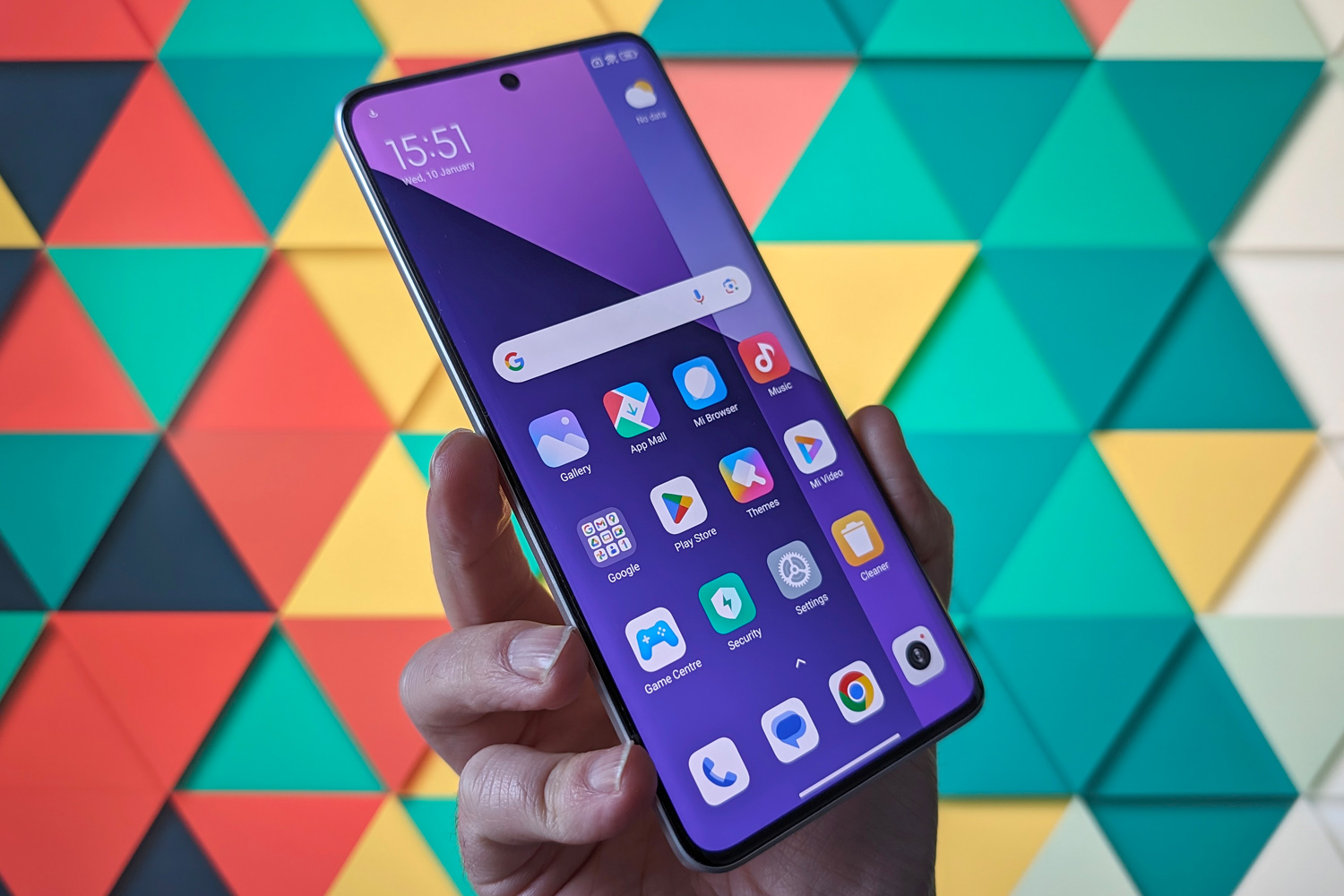Introduction
A high pixel count isn’t the be-all and end-all when it comes to phone photography – but it certainly helps. Xiaomi sub-brand Redmi went down that route last year with 200MP sensors for its mid-range smartphones, and is now looking for similar success with the Redmi Note 13 Pro+.
This is more than a simple refresh, though. There’s revised styling, new features usually found in higher-end phones, and a more potent chipset aiming to keep it competitive with the current crop of affordable rivals. That seems to have worked in India, where the phone has been on sale for a few months, but now it’s Europe and the UK’s turn. It’s landing here at £449 (roughly $570, although Redmi phones aren’t sold in the US) – that puts it squarely in the firing line of Google’s Pixel 7a.
I’ve been testing it alongside the even more keenly-priced Redmi Note 13 Pro to see if either is deserving of your cash.
Design & build: step up on style
I thought the outgoing Redmi Note 12 Pro+ looked pretty tidy for a mid-ranger, but the Note 13 Pro+ goes a few steps further into premium territory. Or rather it does a good impression of a pricier phone, courtesy of a metal effect frame, mirror-like rear sheen, and display that’s ever-so-slightly curved at the sides.
It’s all made of polycarbonate, of course, but didn’t feel at all cheap in my hands. This is a satisfyingly hefty handset at around 204g, and the rear casing doesn’t have that ‘hollow’ sound heard on some entry-grade smartphones. The shiny texture isn’t all that great at hiding fingerprint smears and smudges though, at least on my Moonlight White sample. There’s also Midnight Black and Aurora Purple to choose from.
All three have a distinctive two-tone finish that highlights the oversized rear camera lenses. I think it looks pretty slick, and Redmi has even managed to keep the CE information to a minimum – the next best thing to banishing it from the rear of the phone completely.
New this year is an in-display fingerprint sensor – a step up from the side-mounted scanner built into the Note 12 Pro+’s power button. It’s a little too close to the bottom edge of the phone for my liking, which can make one-handed unlocking a little precarious, but it was at least fairly quick to recognise my thumbprint.
I don’t know whether there wasn’t room in the budget for a 3.5mm headphone port, or whether Redmi just decided to follow the rest of the smartphone world in ditching it; last year’s Note 12 Pro+ was one of only a few mid-rangers that still had one, so I’m sad to see it omitted here. An IR blaster is a nice inclusion, though.
Screen & sound: brighter means better

I get it, not everyone associates curved-edge screens with flagship phones anymore – but the Redmi Note 13 Pro+’s subtle slopes definitely help it stand out from the flat mid-range competition. Redmi has managed to keep the display bezels nice and slim on all four sides, and at 6.67in it’s sizeable without straying into palm-stretching territory. Gorilla Glass Victus should keep it scratch- and scrape-free, too.
The AMOLED panel underneath has a wonderfully sharp 2712×1220 resolution, support for Dolby Vision HDR content, and a 120Hz maximum refresh rate. It defaults to a dynamic mode, with static 60Hz and 120Hz options lurking in the settings menu. I found it fast to react to onscreen motion, so never felt the need to force the higher rate.
This is a colourful display right out of the box, with vibrant hues that are just on the right side of realistic. As with most Xiaomi and Redmi phones, there’s an extensive set of customisation options to tweak colour values and temperature.
The biggest upgrade over last year’s phone is to peak brightness; it has climbed from 900 nits, which was about average among mid-range handsets, to a much higher 1800 nits. I found it easier to use outdoors and in direct sunlight than the old Note 12 Pro+, and it helped give HDR content a bit of extra bite in the highlights.
I had no complaints about the stereo speaker setup, which uses a down-firing main driver and earpiece tweeter. There’s a good amount of mid-range clarity, even when you crank the volume, which benefits podcasts and YouTube clips. Bass is largely absent, though.
Cameras: keeping count
At 200MP, the main sensor is clearly the Redmi Note 13 Pro+’s biggest camera talking point. The 8MP ultrawide and 2MP macro snappers, on the other hand? The former is alright during the day and simply OK at night, with noticeable sharpness drop-off towards the edges of the frame; the latter is a token inclusion I never felt compelled to reach for again after trying it once.
For everything else, the main sensor should be your main port of call. It offers 2x and ‘lossless’ 4x zoom toggles within the camera app, which do a convincing job at getting you closer to your subjects without the need for a telephoto lens. I’m not sold on the lossless claim, with 2x shots looking crisper and cleaner than 4x ones even in perfect light. There’s also a little delay when switching lenses and zoom levels, another hint this is an affordable phone rather than anything more expensive.


I still put Google’s algorithms ahead for overall presentation, with the Pixel 7a coping a little better once digital zoom gets involved, but can’t deny the 200MP sensor can capture an excellent amount of detail. Fine-grain clarity is resolved well, even at a distance.
Redmi’s contrast-heavy processing ensures images are suitably impactful. Colours are vivid and there’s plenty of dynamic range on show during the daytime. Some rivals create more lifelike photos, but fans of Samsung’s colour treatment will find much to like here.
There’s a 200MP high resolution option, but it brings only minor gains at the expense of much bigger file sizes. A manual modes gives a decent selection of settings to tweak, but there’s no support for RAW shooting here.
The Note 13 Pro+ held up well in night-time shooting, with the dedicated low light mode keeping image noise largely at bay. Colours stay mainly true to life, and optical image stabilisation meant my handheld shots never appeared too blurry. There are better performers for your cash, but not by a huge margin. Again, though, this isn’t the fastest snapper out there.

I do wish Redmi would disable beauty mode on its selfie cameras by default; they were enabled on my sample right out of the box, but there was no pop-up alert to inform me of the fact. With it switched off the 16MP front-facer takes relatively clean self portraits and works just fine for video calls.
Software experience: Why UI

Given parent company Xiaomi is making a big deal about its new HyperOS Android interface, I was surprised to see the Redmi Note 13 Pro+ was running the older MIUI 14 out of the box. It sits on top of Android 13, which is now a generation old. Apparently an over-the-air update will change that, but there was no indication of when it would land – or if European handsets would launch with the newer software.
I’m used to MIUI’s more iOS-like additions by now, including separate downward swipes from either side of the screen to reveal the quick settings and notification screens. There’s no shortage of customisation options, extensive theme support and multiple gesture shortcuts to experiment with.
My review unit was the ‘global’ version of the phone, and was chock full of app bloat out of the box. Happily most of the third-party stuff could be deleted, but there’s still a handful of in-house apps that mimic Google’s defaults. I don’t know whether Western audiences will get a pared-back version with fewer preinstalled apps. Either way, they don’t dramatically eat into the available storage.
Performance & battery life: made for the mid-range

With a Dimensity 7200-Ultra chipset at its heart, the Redmi Note 13 Pro+ is every mid the mid-tier handset. MediaTek’s silicon is comfortably quicker than the 700-series Snapdragon chips seen in most of 2023’s affordable phones, wither you opt for the base model (with 8GB of RAM and 256GB of storage) or the step-up version I’ve been testing (with 12GB and 512GB respectively).
Apps might not spring open with quite the same vim and vigor of a pricier flagship, and web pages take a little longer to render, but I had no major grumbles after using it as my full-time phone for a week. Multitasking was smooth enough, with recent apps being kept in memory without needing to redraw every time I headed back to the home screen.
Gaming used to be a MediaTek weak point, but I happily played a bunch of 3D games from the Play Store at largely consistent frame rates. More demanding titles such as Honkai Starrail default to lower settings and a 30fps cap; cranking things introduced some stuttering. Only simpler releases will be able to take advantage of the high refresh rate screen. Gamers may want to look for a previous-gen flagship alternative instead.
Chinese phone brands are still leading the way on charging speeds, and the Redmi Note 13 Pro+ is up there with the best of them. A 120W power brick included in the box can take the phone from zero to 100% in less than twenty minutes – that’s more than four times faster than some mid-range phones, which top out at a measly 25W. It more than makes up for the lack of wireless charging.
The battery itself is a sizeable 5000mAh cell that I found was easily good enough for an entire day’s use away from the mains. Gaming or 4K video recording can take a big bite out of the remaining charge, but my usual daily mix of web browsing, music streaming, YouTube catch-ups, social scrolling and photography wasn’t enough to send it into the red by bedtime.
Redmi Note 13 Pro vs Pro+: what’s the difference?
Redmi likes to launch a whole bunch of models with each new phone generation, and the Note 13 is no different. Europe is being treated to the 13 Pro and 13 Pro+; these look very similar on paper, but choosing between them is more than a matter of how much cash you’d like to splash. While the Pro+ will set you back £449, the Pro is a more manageable £339.
The two phones look almost identical from the front, except the Pro swaps a curved edge screen for a flat AMOLED panel. The rest of the display specs are the same. It also gets a slightly different design at the rear, with a more prominent camera bump. The cameras themselves are unchanged, with a 200MP+8MP+2MP setup. The Pro is only IP54 rated against water and dust, but does manage to make room for a 3.5mm headphone port.
The Note 13 Pro uses a Qualcomm Snapdragon 7S Gen 2 CPU, which isn’t quite as potent as the MediaTek silicon found in the 13 Pro+. It does make room for a slightly larger 5100mAh battery, but wired charging speeds are almost halved to 67W.
Having tested both, I’d say it’s worth stretching for the Pro+ if you can; the extra waterproofing brings added peace of mind, the faster charging is very handy when you’re in a rush, and performance is generally just that little bit better. The Pro is still worth a punt if you can’t get on with curved edge screens, though.
Redmi Note 13 Pro+ verdict

I had an unshakeable sense of deja vu while writing this review. The Redmi Note 13 Pro+ does bring a few upgrades over last year’s model, most notably the much brighter OLED screen. Curved-edge glass and an in-display fingerprint sensor help it feel like a higher-end handset, and the processor upgrade guarantees smooth running. But the overall experience is largely unchanged.
A large battery, fast charging speeds and a capable main camera remain the biggest draws. A new (but not newest) version of Android and two weak secondary snappers remain the biggest drawbacks. In a world where a Google Pixel 7a does such a great job with algorithm-assisted zoom snaps, a OnePlus Nord 3 has a more powerful processor, and Nothing Phone 2 prices continue to tumble, you’ve got to really want all the detail a 200MP camera sensor can provide.
Redmi Note 13 Pro+ technical specifications
| Screen | 6.67in, 2712×1220 AMOLED w/ 120Hz, Dolby Vision |
| CPU | MediaTek Dimensity 7200-Ultra |
| Memory | 8/12GB RAM |
| Cameras | 200MP, f/1.65 w/ OIS + 8MP, f/2.2 ultrawide + 2MP, f/2.4 macro rear 16MP front |
| Storage | 256/512GB on-board |
| Operating system | Android 13 w/ MIUI 14 |
| Battery | 5000mAh w/ 120W wired charging |
| Dimensions | 161x74x8.9mm, 204g |









